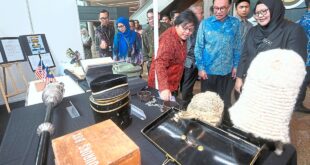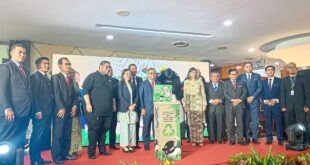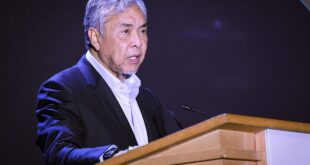PETALING JAYA: As fate would have it, weatherman Lim Ze Hui always happened to be in the thick of things, whenever extraordinary weather occurrences struck.
From freak storms to devastating haze, the just-retired Malaysian Meteorological Department (MetMalaysia) deputy director-general has seen it all.
One was when Tropical Storm Greg struck Sabah in 1996.
“I was on duty at the Sabah Meteorological Department office and the storm hit during my shift.
“Due to the limited availability of charts, we couldn’t see (much). However, we predicted the storm to hit that night,” said the 60-year-old in a recent interview.
One of the department’s observers called Lim later that evening to inform the possibility of seawater filling up the observation centre in Tanjung Aru, which is located by the beach.
“Just before midnight, the waters hit and flooded the centre.
“There was a blackout and communication breakdown at the department’s office at the Kota Kinabalu International Airport, where I was based,” he said, recalling the incident on Boxing Day in 1996.
Sometime between 2005 to 2007, Lim was again called to duty during the devastating haze that struck the South-East Asia region.
Overseeing cloud seeding operations at the time, Lim and his team flew straight into ground zero on a Royal Malaysian Airforce aircraft.
“Our team was tasked to assist Indonesia for cloud seeding in Kalimantan.
“The visibility was close to zero and everything was completely white. The aircraft and tower had to update each other of their whereabouts.
“Suddenly, the pilot told us that there was a malfunction in one of the location sensors and we needed to return to base,” he said.
“We were somewhere in Kalimantan together with other teams (in the sky).
“Although each team had their own coverage areas, the only thought on my mind was whether we could land safely,” he said, adding that their pilot’s calmness kept everyone assured of their safety.
Despite being a professional at his job, Lim said being a meteorologist was not one of his ambitions growing up.
“After graduating, I didn’t really have any target of what I wanted to achieve, and instead looked at whichever job was available.
“I even became a temporary teacher at one point.
“An opportunity then crept up through a vacancy at MetMalaysia, previously known as the Weather Studies Department and I joined the service,” he said, adding that he joined the department in 1988.
He later helmed the Department’s deputy director-general position in 2021 up till his retirement last Tuesday.
On weather forecast, Lim said MetMalaysia’s accuracy for coming 24-hour periods was between 80 to 85%.
“Three days prior, it would be about 70% and a week prior, at about 60%,” Lim said, noting how accuracy tended to reduce when going back further in date.
The challenge however, is in issuing early thunderstorm warnings.
“People may ask why MetMalaysia cannot issue thunderstorm warnings a day prior.
“If you look at the weather patterns in Malaysia, specifically thunderstorms, it is very challenging (to predict) a day ahead, and may raise false alarms.
“When predictions are inaccurate, people may tend to believe them less and less,” he said.
During the northeast monsoon, which is currently occurring, Lim said weather predictions could be done three days prior.
Lim said there was also no such apparatus to measure climate change.
What the department did possess was historical rainfall and temperature data dating back 50 years.
“It’s hard to conclude (climate change) when it comes to rainfall but temperature can be an indicator.
“However, we must be very careful when gauging based on temperatures, as we need to look at what is happening in the surroundings of our observation stations such as developments which could affect temperature readings,” he said.
Over the years, Lim said MetMalaysia’s services improved by leaps and bounds with the technologies it now possessed.
With the weather being his bread and butter over three decades, Lim said analysing weather charts had become part and parcel of his daily routine.
“Hopefully after I retire, it will be less,” he joked.
“However, if there are any significant weather occurrences, I can still refer back to the charts that are shared with the public.”
 BeritaKini.biz Berita Viral Terkini di Malaysia
BeritaKini.biz Berita Viral Terkini di Malaysia





